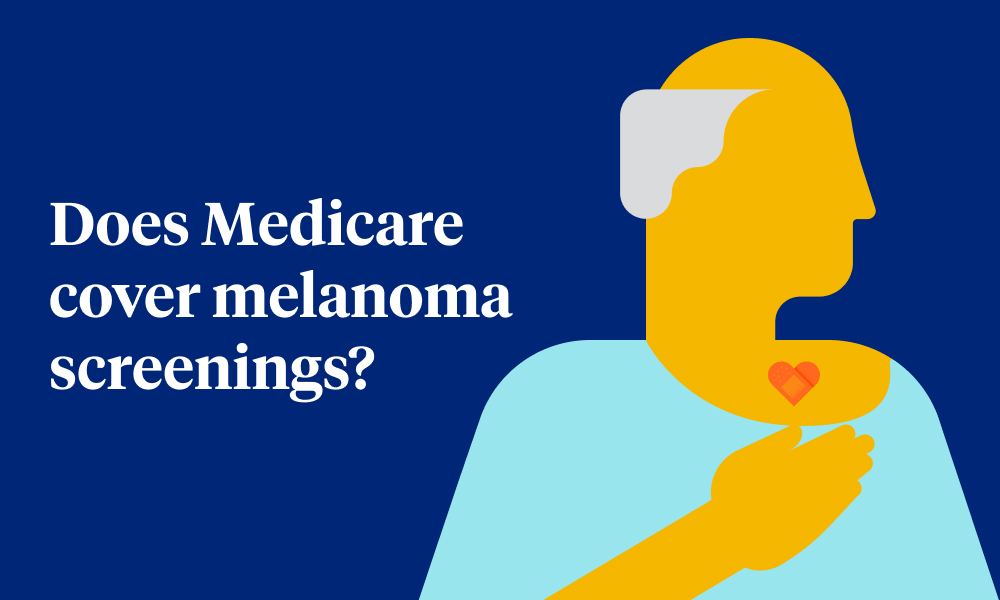
Medicare does not cover regular preventive melanoma screenings. However, Medicare may cover services and tests related to diagnosing and treating skin cancer.
Medicare Part A may help cover care you receive as in patient to help treat your skin cancer.
Medicare Part B may cover preventative screenings and tests that can help rule out or diagnose skin cancer as well as cover a doctor visit to check a mole or other spot on your skin.
Will Medicare help pay for melanoma screenings by a dermatologist?
Medicare may cover a dermatologist visit for further assessment, if your doctor refers you. Medicare will pay for a dermatology visit if it is medically necessary, such as to check or further assess a skin spot or mole. But a preventive melanoma screening or skin check by a dermatologist is generally not covered. If you have a Medicare Advantage plan, call your plan to learn about specific coverage details.
Melanoma is treatable and can be curable when diagnosed early. Go to the doctor right away if you find a mole or skin spot that you’re worried about.
Learn more about melanoma and skin cancer
Now that you understand how Medicare may cover care related to melanoma and skin cancer, here is some further information you may find helpful.
What’s the difference between melanoma and other skin cancers?
Melanoma is the most serious type of skin cancer. It often develops in an existing mole but can also appear as a new mole or dark spot on the skin.
Other skin cancers are on the surface of the skin and localized, while melanoma begins deep in the skin and can spread to other parts of the body. Non-melanoma skin cancers include squamous cell carcinoma and basal cell carcinoma.
Precancerous growths called Actinic Keratoses (AK) may also occur. These are usually small scaly growths that you may feel before you actually see them.
What does melanoma look like?
You can tell a melanoma from a carcinoma or AK because a melanoma has distinct features. The features are simple to learn and remember by using the ABCDE Rule:
A = Asymmetry: One half of a mole or spot is different from the other half.
B = Border: The edges are irregular, scalloped or poorly defined.
C = Color: The color varies from one area to another and may include tan to very dark brown shades and sometimes white, red or blue.
D = Diameter: The mole or spot is wider than a pencil eraser, although some melanomas are smaller.
E = Evolving: The mole or spot looks different from others on your body or is changing in size, shape or color.
What do other skin cancers look like?
Non-melanoma skin cancers vary in appearance.
- Basal cell carcinomas often look like small open sores or pink growths.
- Squamous cell carcinomas may show up as scaly red patches or growths that have a dip in the center.
While not as serious as melanoma, these skin cancers need attention and treatment.
Any time you believe you may have skin cancer it’s important to see your doctor about any skin spot or mole that looks suspicious to you as soon as possible. Regular skin self-checks can help you find suspicious spots and get to the doctor quickly if you need to. And since melanomas may occur in hard-to-see places, like on top of your head or on your back, it’s important to be thorough.
About Medicare Made Clear
Medicare Made Clear brought to you by UnitedHealthcare provides Medicare education so you can make informed decisions about your health and Medicare coverage.
Get the latest
Boost your Medicare know-how with the reliable, up-to-date news and information delivered to your inbox every month.
*All fields required